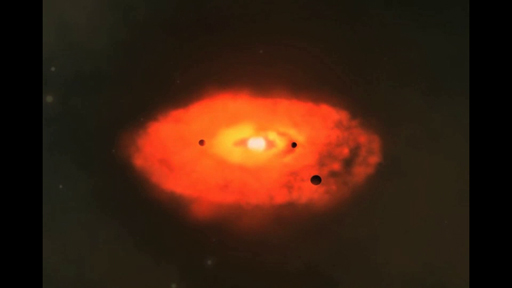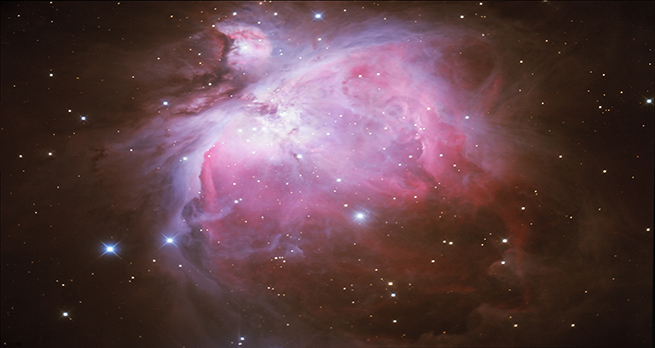4.2.2 Collapse of a nebula
In the video, a fraction of the nebula collapses under gravity to produce a rotating disc of gas and dust.
Note: this video has no sound.

Parts of the disc clump together to form bodies which eventually become planets. The central region of the disc is the hottest area, and eventually emerges as a star.
Most very young stars – less than about 10 million years old – have these discs of dust and gas around them. The discs are seen less and less around older stars, suggesting that, over time, they dissipate or form planets. Around 15% of nearby stars have discs around them. These discs have proportionally high amounts of dust, and low amounts of gas. The dust is a mix of ice, silicates and carbonaceous (containing carbon) material and the gas is mostly hydrogen and helium.
The dust grains are initially less than a thousandth of a millimetre across. Aided by heating events that allow the dust to melt and stick together, the dust coagulates. Eventually, metre to kilometre-sized boulders, called planetesimals, form.
Next, you will find out more about planetesimals.
